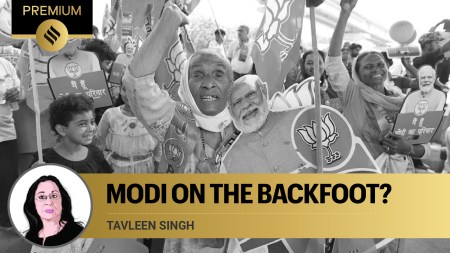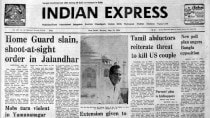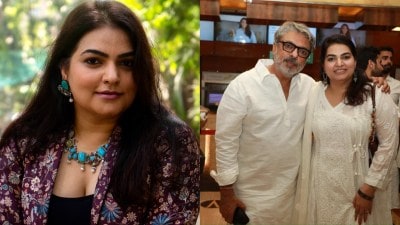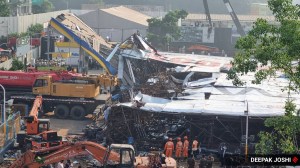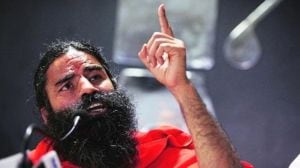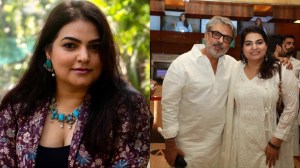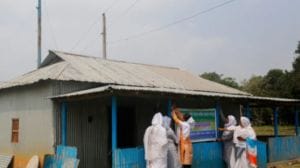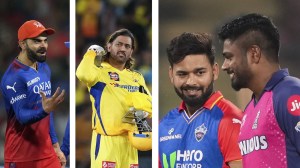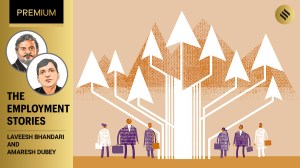- India
- International
Three years since anti-CAA protests: Law and lawlessness
A transformation of victims into culprits continued after the anti-CAA movement peaked, during the Northeast Delhi violence in February 2020. The police’s ‘post-violence work’ determines whether one gets qualified or disqualified from victimhood.
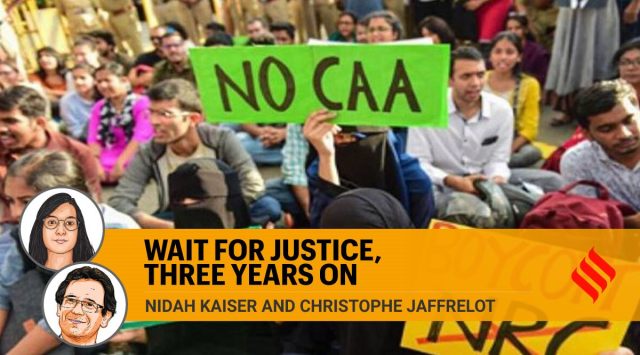 Uttar Pradesh, during the anti-CAA protests, was the state that was worst impacted by police brutality, looting and the destruction of property. (File Photo)
Uttar Pradesh, during the anti-CAA protests, was the state that was worst impacted by police brutality, looting and the destruction of property. (File Photo) It has been three years since the massive, country-wide protests against the Citizenship (Amendment) Act, 2019 (CAA). While the peaceful protests were an exercise of democracy by rights-holding citizens, there were also violent reactions in several states. In the aftermath of the violence, there has emerged a pattern of police work that seems to undermine the principles of natural justice through a process of “unmaking of the victim”. In Uttar Pradesh since December 2019, and in Delhi since the February 2020 riots, the police have been accused of erasure of victimhood, and the transformation of victims into culprits.
UP, during the anti-CAA protests, was the state that was worst impacted by police brutality, looting and the destruction of property. Among other losses, the violence that ensued led to the deaths of at least 23 Muslim men across the state, of which, 22 died as a result of gunshot injuries. Following the UP police’s handling of the cases in the districts of Firozabad, Meerut, Kanpur, Bijnor, Sambhal, Muzaffarnagar, Rampur and Lucknow, many of the families of the deceased have lost hope for justice. In most of the cases, the UP police have filed final reports stating a lack of evidence, or in some instances, they have levied the charge against “four to five thousand unknown protestors”. A common thread in all the cases is the derecognition of the deceased person as having been a victim of crime.
This seems to have occurred in three ways.
First, the act of protest was itself criminalised. The participants were labelled as miscreants, and the sit-ins as nuisances. Thus, those who died of gunshot injuries were incriminated by virtue of their presence at the protest.
Second, many first information reports (FIRs) were not filed. In the cases of killings, the families of the victims alleged that the police refused to record their FIRs. Complaints that assigned responsibility for the deaths to police excesses were reportedly turned down. It has been alleged that even in FIRs recorded, the narrative of the incident was marked by omissions.
Third, some of the deceased were accused and subsequently framed as criminals. In cases where investigations were carried out and chargesheets filed, the police’s reports invariably proposed that the groups of people were engaged in violence against each other. The chargesheets alluded to gang wars between the protestors, asserting that those who had been killed had been involved in the violence, or had “died accidentally”.

Some individuals who had been hit by bullets, but survived, were arrested months after the incident, under the flexible category of “unknown protestors”. Others have been accused in fresh cases of destruction of public property, which have been lodged two and a half years after the incident, under the newly passed UP Recovery of Damage to Private and Public Property Act, 2020.
The police’s “post-violence work” thus determines whether one gets qualified or disqualified from victimhood. How then can the procedures of law impart justice? A person has the right to expect justice on meeting two criteria. First, the occurrence of a crime as defined in the Indian Penal Code (IPC). And second, the recognition of that person as being a victim of the said crime. In anti-CAA cases, while killing is a crime as defined in the IPC, Muslim men have failed to qualify for justice as a consequence of their recognition as criminals and not victims.
Such a transformation of victims into culprits continued after the anti-CAA movement peaked, during the Northeast Delhi violence in February 2020. Mobs led by Hindu nationalists, including BJP cadres, came from different regions to aid local activists. Around 600 houses were burnt, and shops looted selectively. Markets were razed to the ground, mosques desecrated and burnt.
After four days, the official death toll was 55, of which 42 were Muslims. Thousands of people had to flee their homes and seek refuge in relief camps.
The post-violence modus operandi remained the same as for the anti-CAA protest. While video clips of the violence captured six to eight security personnel assaulting five severely injured men lying on the street, and ordering them to sing the national anthem and Vande Mataram — one of them was to die — the police disqualified the men from being “victims”. The FIR reports no eyewitnesses and omits to mention the police-related violence, and the videos. About three years on, the police have “failed” at probing the accused personnel despite being questioned by the Delhi High Court.
Further, not only were many victims unable to file complaints, but the police also held Muslims responsible for the violence. More than two years after the arrests of several activists such as former JNU student Umar Khalid and businessman-turned-human-rights-activist, Khalid Saifi, co-founders of the NGO United Against Hate, the judiciary is slowly making right on the police’s unmade victims. While some of the accused are still in jail, others accused of terrorism, rioting, possession of arms, attempt to murder, incitement of violence, sedition, murder, and promoting enmity between different groups on grounds of religion among other cases, have been acquitted.
Kaiser is a PhD student at SOAS and Jaffrelot is senior research fellow at CERI-Sciences Po/CNRS, Paris, and professor of Indian Politics and Sociology at King’s India Institute, London
40 Years Ago
EXPRESS OPINION
More Explained
May 14: Latest News
- 01
- 02
- 03
- 04
- 05





